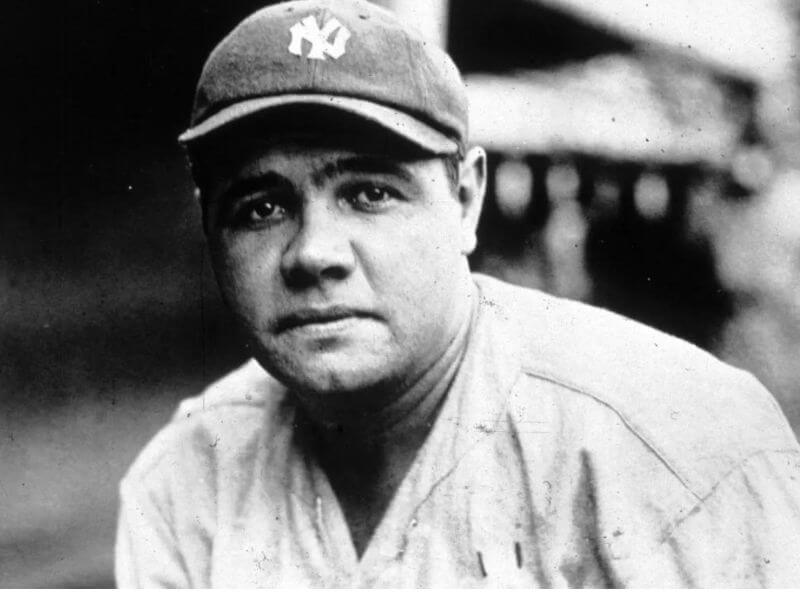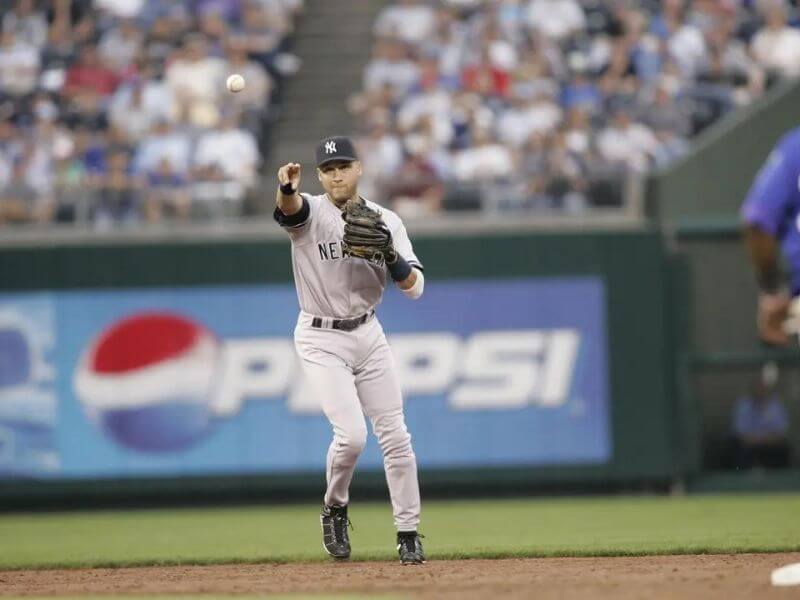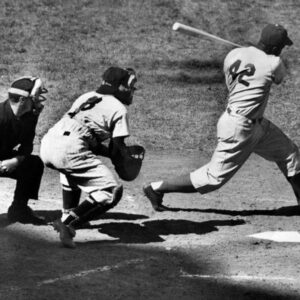What is ops in baseball ? Modern statistics are changing the way MLB players are evaluated. In MVP discussions, fans will more often hear WAR (wins above replacement) than they hear batting average. On the defensive side, errors and fielding percentage have effectively been replaced by defensive runs saved and outs above average.
OPS isn’t as analytical as some of these stats. In fact, it’s been around for a very long time. It is, however, quickly becoming a much-preferred alternative to batting average when it comes to one number that defines how good a hitter a given player might be.
What is OPS in baseball?
OPS stands for on-base percentage plus slugging percentage. A hitter’s OPS is his on-base percentage and slugging percentage added together. That means the number includes the value of a player reaching base often, while also quantifying what kind of hits a player is producing.
Batting average doesn’t weight a player’s hits the same way OPS does. For example, a player with 27 singles in 100 at-bats would have a .270 average. A player with 27 home runs in 100 at-bats would also have a .270 average. The player with 27 home runs has decisively added more value than the player with 27 singles, and he would have a dramatically higher OPS as a result.

What is slugging percentage?
Slugging percentage is certainly the more complicated of the two stats that go into OPS. Ultimately, a player’s slugging percentage takes into account his total bases. Walks and hit-by-pitches are not factored in; only hits.
When calculating slugging percentage, singles count as one, doubles are multiplied by two, triples are multiplied by three, and home runs are multiplied by four. The resulting numbers are added together a divided by a player’s total number of at-bats.
Unlike on-base percentage or batting average, slugging percentage recognizes that not all hits are the same and is a good tool for evaluating a player’s power. A player who hits 45 home runs will come away with a pretty strong slugging percentage regardless of whether he hits .200 or strikes out often (looking at you, Kyle Schwarber).
What is on-base percentage?
On-base percentage measures how often a hitter reaches base, per plate appearance. Hits, walks and hit-by-pitches are included in a hitter’s on-base percentage, but a hitter does not credit for reaching base on an error, dropped third strike, or fielder’s choice.
If a player reaches base by either hit, walk or hit-by-pitch 34 times out of 100 plate appearances, his OBP will be .340. To get a player’s OPS, that number is added to his slugging percentage.
What is a good OPS in baseball?
OPS isn’t weighted, unlike OPS+ and wRC+, so the average OPS varies by year. This season, the league average OPS was .734 OPS. In 2022, however, the average OPS was only .706. In almost all cases, though, any OPS above .800 indicates a player is a good-to-very-good hitter.
A 1.000 OPS is essentially the holy grail of the stat. While the value of a 1.000 OPS varies by season, only a small handful of qualified hitters tend to reach the mark or even come very close each year. This season, Shohei Ohtani, Corey Seager and Ronald Acuna Jr. posted an OPS north of 1.000, while Matt Olson and Mookie Betts were both above .980.
It’s also fair to scrutinize OPS by position. For example, catchers don’t tend to hit as well as shortstops, so a .750 OPS out of a full-time catcher might satisfy a team much more than a .750 OPS from a full-time shortstop.
OPS and OPS+ Definitions
OPS and OPS+ are statistics used to evaluate offensive performance. OPS simply stands for On Base Plus Slugging, while OPS+ is a scaled version of that same idea. You will see OPS quoted during baseball broadcasts from time to time, as it has become relatively well-known, while OPS+ remains present mostly in the sabermetric community.
OPS is nothing more than adding together on base percentage and slugging percentage, making it a relatively simple stat, as far as ‘advanced metrics’ are concerned.
OPS+, on the other hand, is a bit more complex, as it considers park factors and league factors.
While both of these are rate stats, OPS is expressed in raw terms while OPS+ is scaled to 100 as league average.
The Concept of OPS and OPS+
The concept behind these statistics is that some of the traditional batting statistics – such as batting average and slugging percentage – don’t quite do a good enough job of representing a player’s contributions at the plate. OPS and OPS+ aim to offer a more realistic representation of performance by including elements that are overlooked in basic statistics.
Let’s walk through an example to see how OPS can offer a more informative look at player performance than something like batting average. During the 2018 season, Jose Altuve and Mike Trout, two of the best players in baseball, had similar batting averages. Altuve batted .316 for the year, while Mike Trout batted .312.
On those numbers alone, you might be tempted to think that they were similarly productive at the plate, but that was not the case. When looking at OPS, we see Trout well ahead, with a 1.088 mark compared to .837 for Altuve (which is still very good). Trout reached that 1.088 number with a .460 OBP and a .628 SLG. For Altuve, those numbers were .386 OBP and .451 SLG. Thanks to significantly higher numbers in both on base percentage and slugging percentage, Trout was able to set himself apart. In fact, his 1.088 OPS was the highest for any qualifying player during the 2018 season.
Why are OPS and OPS+ Important?
These are important statistics because they can be thought of as a gateway to advanced statistics. Nearly every baseball fan knows and understands batting average, on base percentage, and slugging percentage. However, getting those fans to make the jump to advanced stats can be difficult.
Some advanced metrics are hard to understand for even the most dedicated sabermetricians, but with OPS, the intimidation factor is reduced, helping fans take a step away from traditional stats and toward other metrics. In fact, these two stats can work together to help fans make that transition.
For example, someone might get started by learning about OPS. Given that it is simply on base percentage and slugging percentage added together, it should be pretty easy to learn how this stat works.
From there, introducing OPS+ will be a little easier, and will help the individual pick up the idea of stats that have been scaled to use 100 as league average. There are a number of other stats that work this way, such as wRC+, so getting started with OPS and OPS+ can be helpful. Also, OPS+ includes park and league factors, which is another concept that appears time after time in advanced metrics.

How are OPS and OPS+ Calculated?
For OPS, the calculation could hardly be any easier. As the name indicates, simply add together a player’s on base percentage and slugging percentage to arrive at their OPS. So, if a player has a .350 on base percentage and a .450 slugging percentage, their OPS would be .800.
With OPS+, things are far more complicated, because of the inclusion of both park and league adjustments. Your best bet is simply to look up this statistic when you would like to use it, which can be found on Baseball Reference.
What are Good OPS and OPS+ Numbers?
For OPS, anything north of .800 is going to signal a player who has had a good offensive season. Going above .850 will usually put a player within reach of All-Star status, depending on what other skills that player might bring to the table (such as defense and baserunning). Players with an OPS above .900 are some of the best hitters in the game, and those managing to break 1.000 are true superstars.
When looking at OPS+, the key is to remember that the statistic is scaled to set 100 as league average. So, a player with an OPS+ above 100 is a better than average hitter for that season. Recording an OPS+ above 120 is an excellent effort, and only a few players will be able to get into the 150s and beyond.
Above is information what is ops in baseball. Hopefully, through the above content, you have a more detailed understanding of what is ops in baseball .Thank you for reading our post.









